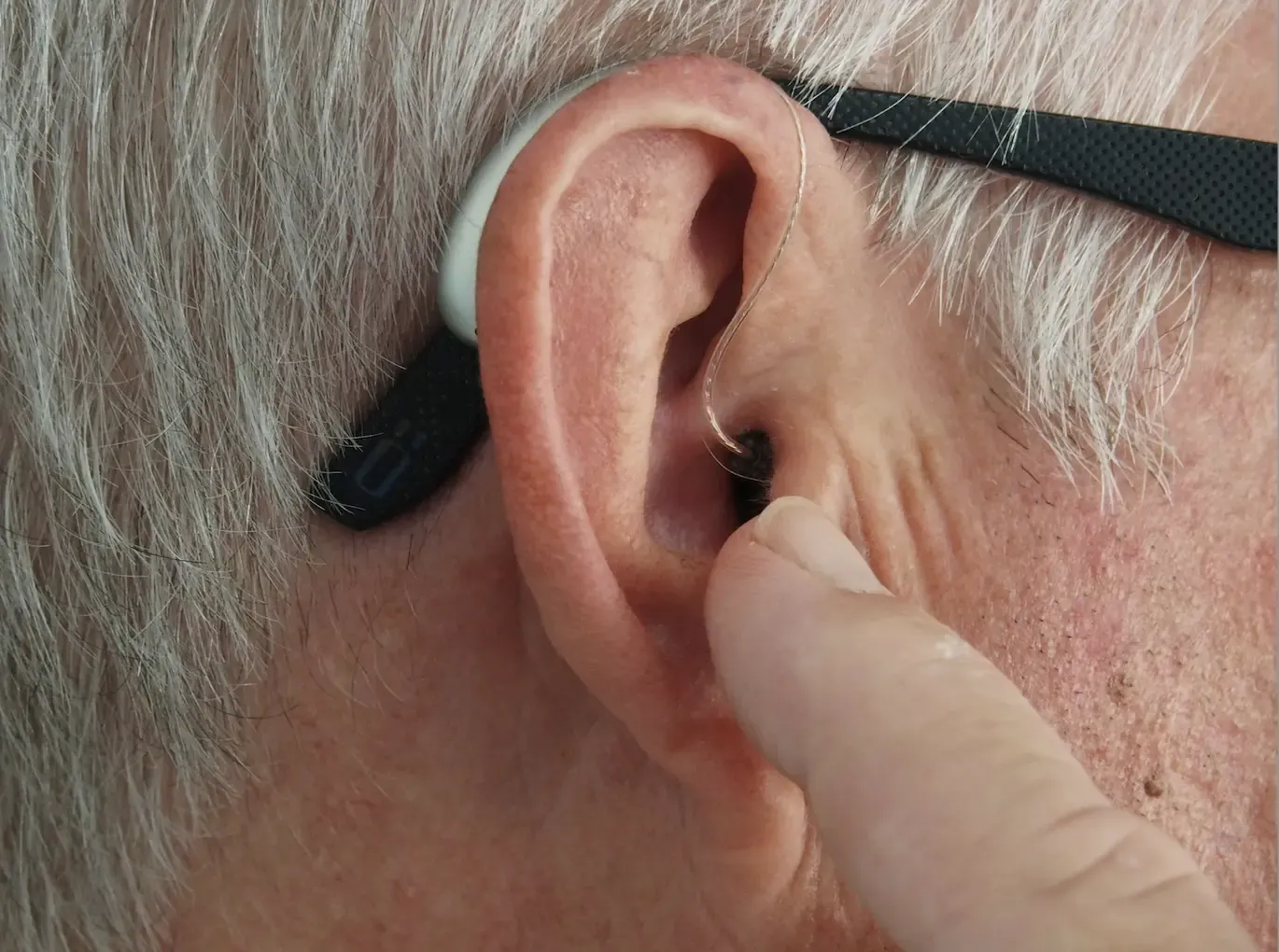Hearing Aids & Arthritis

Hearing Aids & Arthritis
5 mins
Published: 29 September 2025
29 September 2025
Hearing Aids & Arthritis: Overcoming Hand and Dexterity Challenges
For individuals living with arthritis, even the smallest tasks like inserting hearing aids or replacing batteries can be challenging. Joint pain, stiffness, and reduced mobility in the hands can make handling such small devices frustrating.1
The good news? Today’s hearing aids are designed with accessibility in mind. From rechargeable models to invisible extended-wear devices, there are solutions to make hearing aid use easier and more comfortable. This blog will explore how arthritis affects hearing aid management and which styles and tools can help.
What Arthritis Can Affect
Arthritis is one of the most common chronic health conditions, affecting 4.11 million Australians.2 It causes inflammation, stiffness, and pain in joints, often in the hands and fingers. Over time, this can limit grip strength, and fine motor skills, making everyday activities like buttoning a shirt or opening a jar more difficult.3
When it comes to hearing aids, arthritis can create specific challenges.4 These include:
- Inserting or removing devices: Stiffness and reduced dexterity make handling small components tricky.
- Battery management: Replacing tiny disposable batteries can be frustrating and sometimes impossible without help.
- Cleaning and maintenance: Arthritis may make it harder to regularly clean or adjust hearing aids.
These challenges may discourage people from using their hearing aids consistently, but with the right hearing aid style and supportive tools, hearing doesn’t need to be compromised.
Hearing Aid Styles That Help
Some hearing aids offer advanced features and designs that make them more practical for people living with arthritis. The right style of hearing aid can significantly reduce daily frustrations.5 If you’re navigating hearing aids with arthritis, consider the following styles.
- Receiver-in-the-Ear (RIE) or Behind-the-Ear (BTE) Styles
These two-part devices rest behind the ear, with a slim wire leading into the ear canal. According to Connect Hearing audiologist, Chloe Beeler, these hearing aids can benefit those with arthritis in the following ways:
- Custom ear moulds provide a more secure grip, helping with insertion and removal.
- Rechargeable models remove the need to handle fiddly batteries.
- Larger casing compared to in-ear styles may be easier to hold.
2. In-the-Ear (ITE) or In-the-Canal (ITC) Styles
These devices feature compact, single-piece hearing aids that sit entirely in the ear canal. As Beeler explains, “This particular style can be easier for some people to insert into their ears as it is only the one component that is being inserted into the ear and nothing is needing to be placed behind the ear.” Other benefits include:
- They still typically rely on disposable batteries, but come with magnetic tools to simplify battery changes.
- They remain a discrete option while still offering strong performance.
3. Lyric Extended-Wear Invisible Hearing Aid
Considering it’s the world’s first invisible hearing aid, Lyric is a unique option that is placed deep in the ear canal by a professional and worn continuously. According to Beeler, “This can be a fantastic option for clients that have dexterity issues.” Benefits for those with arthritis include:
- This device stays in place for six to eight weeks at a time without daily removal.
- No batteries to change or maintain during that period.
- It’s the most hands-off, low-maintenance solution available.
Supportive Accessories & Tools
Even the most accessible hearing aids can benefit from supportive tools that reduce strain and frustration for those with arthritis. These extras are designed to simplify daily use:
- Rechargeable charging docks: Instead of changing small batteries, simply place the hearing aids in a dock each night.
- Custom moulds and grips: For RIE or BTE hearing aids, these modifications make handling and insertion much easier.
- Magnetic battery tools: Supplied with some ITE or ITC models, these small tools help guide batteries into place without finger strain.
- Voice control and smartphone apps: Adjusting hearing aid volume and settings hands-free means no fiddling with buttons.
Personalised Support From Connect Hearing
No two people experience arthritis the same way, so it’s important to seek out personalised support. At Connect Hearing, our expert team of audiologists work closely with you to ensure your hearing aids are practical and easy to use. This includes:
- Demonstrating different hearing aid styles to suit your lifestyle and daily needs.
- Practising insertion, removal, and care to help you build confidence.
- Offering a 60-day money-back guarantee, so you can trial devices without worry.
- Providing ongoing follow-up and adjustments to ensure comfort and long-term hearing health.
Why It Matters
Good hearing is about more than sound, it also improves independence, wellbeing, and quality of life. Managing arthritis should never mean giving up on hearing support. With the right hearing aid style, tools, and professional guidance, you can continue to enjoy the benefits of clear, connected hearing.
If arthritis is making hearing aid use difficult, book an appointment at your local Connect Hearing clinic. Our expert team will assist you in exploring different styles of hearing aids, trying supportive tools, and finding the option that works best for your hands and lifestyle.
References
- Ear & Hearing (January 2013), The aging hand and the ergonomics of hearing aid controls, National Library of Medicine, accessed 2 September 2025.
- Mayo Clinic (29 August 2023), Arthritis, wwww.mayoclinic.org, accessed 2 September 2025.
- Arthritis Australia (June 2025), Arthritis: Fast Facts, Arthritis Australia, accessed 2 September 2025.
- Arthritis Foundation (9 June 2022), What Is Arthritis?, www.arthritis.org, accessed 2 September 2025.
- Indian Journal of Otolaryngology and Head & Neck Surgery (23 July 2021), Hearing Function in Adults with Rheumatoid Arthritis: A Scoping Review for Preventive Audiology Planning, National Library of Medicine, accessed 2 September 2025.
Author
Connect Hearing
Reviewed by:
Connect HearingSonova
.png?branch=web_prod)
.png?branch=web_prod)